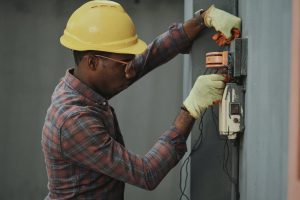When we talk, we’d like to think that the person who we are talking to understand what we mean. That isn’t always the case and you know it. That’s why we take great pains in changing our intonation. And yet, as much as we want to pretend that we understanding all the nuances of communication, this is not enough right now. We have been thrust into social isolation and remote learning. Students will be learning remotely instead of attending face-to-face classes. Is there enough time to improve a teacher’s ability to communicate?
There are a lot of classes online for social skills training. That will come in handy because the best method of communication in today’s hyper-digital world is live streaming and video classes. While it’s okay to send modules and writeups, nothing beats a classroom setting. But since that is not advisable or possible today, you need to do the next best thing, which is to stream your classes live to your students or send a recorded video of you discussing different concepts.
Body Language and Expressions
When you communicate with your students, they absorb the message both from what they’re hearing and what they’re seeing. People listen both with their ears and eyes. They tend to pick up nuances from your body language and facial expressions. This leads to a deeper understanding of the topics and issues that you are discussing.
But because a face-to-face classroom set up isn’t possible yet, you have to make do with the tools made available by technology. Thanks to modern devices and software, you can record a video of yourself discussing the different topics and concepts. This will make it easier for your students to understand the discussion. Many of them will rather watch your video than read a 10-page module on it.
Even better, you can live stream the video. This allows for more engagement between you and the students. They can raise questions and participate in the discussion. Any miscommunication can be clarified immediately.
The best thing about having video classes is that a student can replay these when they need to revisit an idea raised. If the lessons move too quickly, they can go back to watching them. This takes the pressure off the students.
But it is not so much about the method of communication as it is about how teachers communicate theories, concepts, and ideas. Students will easily be distracted during the remote learning process. This is a new phase in their lives as students. Everyone’s adjusting, but more so them who have to suddenly learn via a completely different system.
Less Is More
How do you craft the message of your lectures? A typical classroom lesson runs for about one-and-a-half hours. That shouldn’t be the case with your online lectures. Much like watching a marketing video, you’ll only hold your students’ attention captive for the good part of 30 minutes.
Anything more than that will be too boring for them. So, try to hold off yourself from talking for more than 20 to 30 minutes. The majority of your online lessons should be spent engaging, sharing, and discussing.
Manage Expectations

This is a new chapter in your life as a teacher and their lives as students. Learn to be considerate of how everyone is coping at such a challenging time. Some of them may not participate as much as you’d like them to. Many of them will have a hard time focusing on your lessons given the number of distractions that surround them. It is up to you as a teacher to slowly make the transition from a classroom setting to a virtual classroom.
Guiding your students during this time involves choosing the best method to communicate with them and being deliberate with how you teach the lessons. Remote learning hasn’t been around for a long time that you understand all its strengths and weaknesses. Some adjustments definitely have to be made in terms of mixing up the ways how you go about discussing, sharing, and presenting concepts.
Communicate Regularly
It is tempting to make a module, send it to the parents/students, and let them handle the learning themselves. You can check in on them once in a while but for the most part, you’ll go about your business as they learn on their own. Remote learning involves clear, constant, and regular communication with your students. You need to know what challenges they face in remote learning, so you can address them as soon as possible.
Again, this isn’t an easy time for anyone. You need to be patient and understanding of each other. This is an experimental journey for teachers and students. You are learning together, so celebrate tiny milestones and solve problems as they become apparent.


